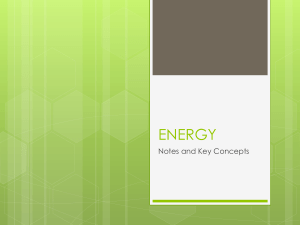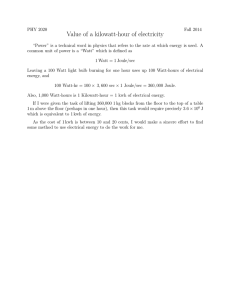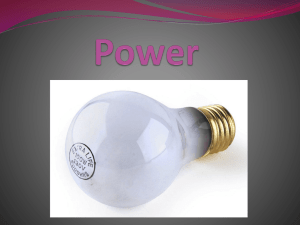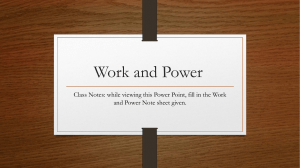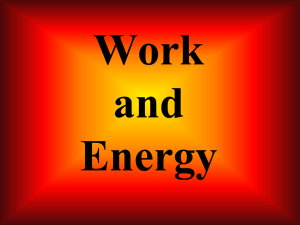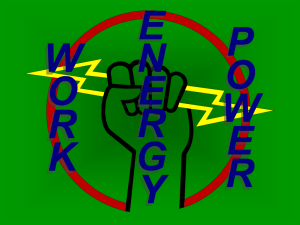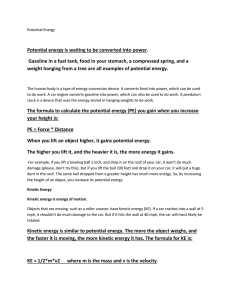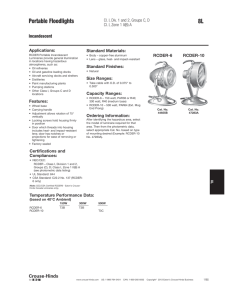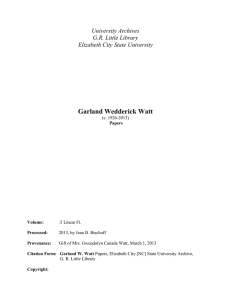Potential Energy PE (Ug)
advertisement
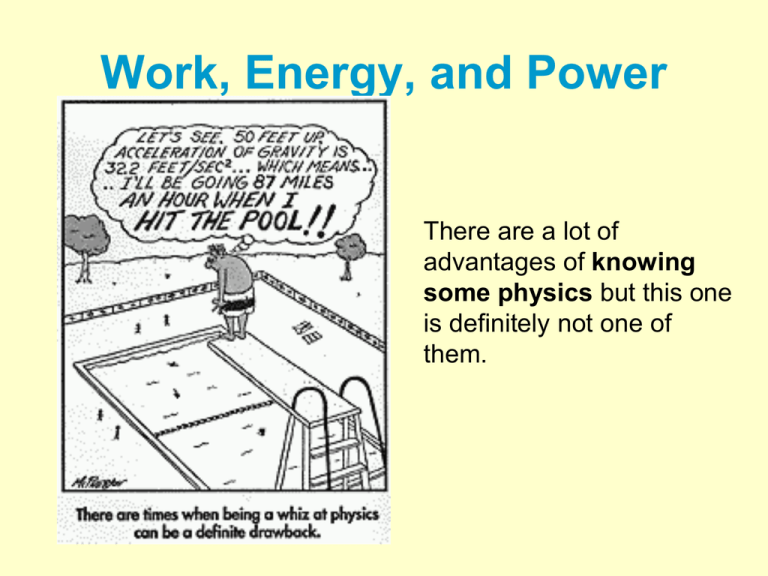
Work, Energy, and Power There are a lot of advantages of knowing some physics but this one is definitely not one of them. Potential Energy PE (Ug) An object can store energy as the result of its position. Potential Energy PEgrav or Ug Ug = PEgrav = mass * g * height Gravitational potential energy is the energy stored in an object as the result of its vertical position (i.e., height). Ug = PEgrav = m * g * h m = mass of object (kg) g = gravity = 10m/s^2 h = height (m) Unit: Joules (J) Kinetic Energy Kinetic energy is the energy of motion. m = mass of object v = speed of object Unit: Joules (J) The Joule is the unit of work and energy. 1 Joule = 1 Newton * 1 meter 1J = 1 N * m = (Nm) Hoping to replace steam engines by electric motors, his first research sought to improve electric motor efficiency. His investigations concerned themselves with James Prescott Joule the production of heat. Great Britain (1818-1889) Mechanical Energy ME = PE + KE Unit: Joules (J) ME = PE + KE The total amount of mechanical energy is merely the sum of the potential energy and the kinetic energy. Work W= F*d Work is the energy expended to move something. If there is no motion, no work has been done no matter how much force is applied. In physics, work is defined as a force acting upon an object to cause a displacement. The Joule is the unit of work. 1 Joule = 1 Newton * 1 meter 1J = 1 Nm Work- Energy Theorem Energy is conserved Energy Transformation for Downhill Skiing Roller Coaster Energy Transformation on a Roller Coaster Energy Transformation for a Pendulum Power P P = W/t Power is the rate at which work is done. Unit: J/s = W (Watt) James Watt (1736-1819) James Watt dies, age 83, healthy, happy, and famous 1781-1802 Patents steam engine In 1782 a sawmill ordered an engine that was to replace 12 horses. James Watt was born in 1736 in Greenock, Scotland. James was a thin, weakly child who suffered from migraines and toothaches. He enjoyed mathematics in grammar school, and also learned carpentry from his father. The standard metric unit of power is the Watt. Unit: W (Watt) One horsepower is equivalent to approximately 750 Watts. Formulas PE = Ug = m*g*h (J) KE= ½*m*v2 (J) W = F*d (J) P = W/t P = (F * d)/t (J/s or Watt) P= F*v (J/s or Watt) ME= KE+PE (J) Hint: to make kg to a “Force” use W= F = m* g g=10 Formulas Impulse I = F*t (Ns) Momentum p = m* v (kg*m/s) Impulse = change in momentum I = p Impulse-Momentum F*t = m*v Conservation of momentum m1 * v1 = m2 * v2

